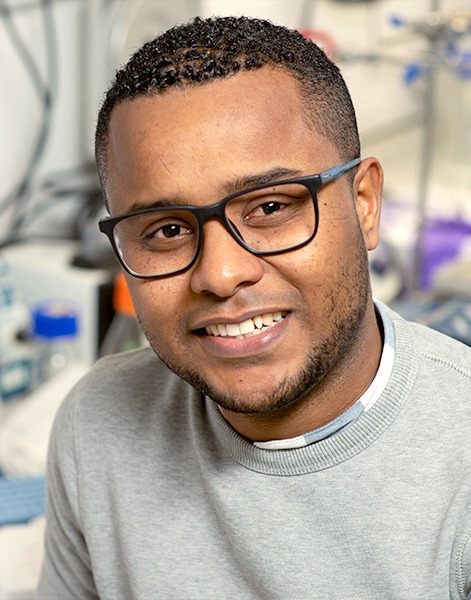Why this scientist thinks RNA is ‘much more fun’ than DNA
Five questions with Assistant Professor Jay Brito Querido

How did you become interested in science and decide to pursue it as a career?
I would say that since high school, I have had some special interest in science. I remember the first subject in science that really kept my attention was when we start to learn about all this process of DNA replication, sometime around the last year of high school. So DNA really started to get me interested in learning more about molecular biology — but I eventually discovered my interest is really in RNA.
Why is RNA so much more interesting for you?
My interest in RNA started during my master’s program when I was studying an RNA virus. I remember that at some point I realized, “Wait a minute, RNA is much more fun than DNA because RNA can do so many things” — and we still don't understand most of them. I actually think that for many years, RNA was in the shadow of DNA. But RNA can store genetic information, like DNA, but they can also have catalytic activity. They can decode the genetic information. I think they will play a very important role in therapies for treating cancers and infectious disease. And in terms of the role of RNA in the regulation of gene expression, there is still so much to understand and explore.
How will your new research group at the University of Michigan approach its study of RNA?
The main interest of my lab is to understand how human cells can identify and decode messenger RNA, or mRNA. We know proteins are the building blocks of our cells — we need proteins to work, to think, to do basically everything — and the precise instructions for how and when proteins are made is encoded into our DNA. But that information is basically useless if the ribosome cannot understand it. And in order for ribosome to understand this information, it first has to be transcribed into mRNA that can then be translated by the ribosome to produce protein. And this makes translation a central piece in our life because we need translation for everything.
Errors in this translation process are related to many human diseases, like cancers or neurological diseases. So in my lab, we will try to understand the regulation of translation in humans and the implication of regulation in some human disease. We will specifically try to understand how one type of enzymes called DEAD-box RNA helicase regulate this process.
Once you became interested in scientific research, and studying RNA specifically, what made you choose the academic research track?
I remember that was very easy decision for me. At the end of my master’s program, I knew I wanted to continue doing what I had been doing, conducting research in an academic research lab. It was never really a question to me. It was, I would say, just something natural.
Why did you decide to establish your research program at the University of Michigan?
I think that this was also an easy decision, for me, personally. The University of Michigan was on the top of my list from the very beginning of my job search because it has a huge RNA community, probably the largest organized RNA community in the world. And in addition to this large RNA community, there is a strong culture of collaboration here. We have this Center for RNA Biomedicine, which brings all the faculty in the RNA field here at U of M together to talk to each other and create opportunities for collaboration.
The LSI and Biological Chemistry department are ideal environments for my research, and our excellent facilities here will allow me to tackle important scientific questions in the field of mRNA translation. I think that only a few universities in the U.S. can say that they have a cryo-EM facility comparable to what we have here. Thus, it was very clear for me, indeed from my very first interview here.


